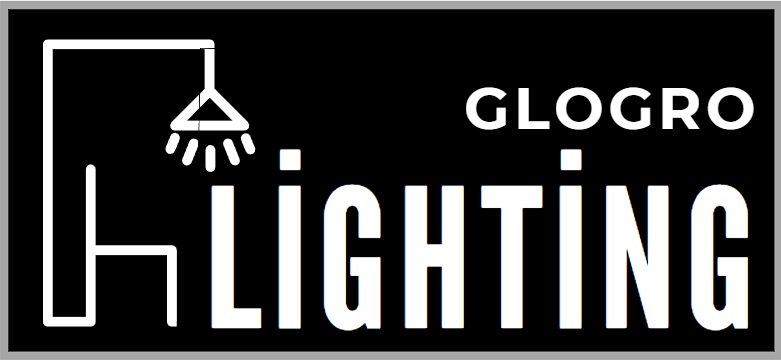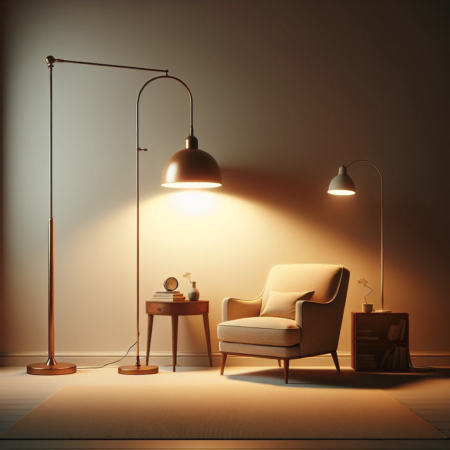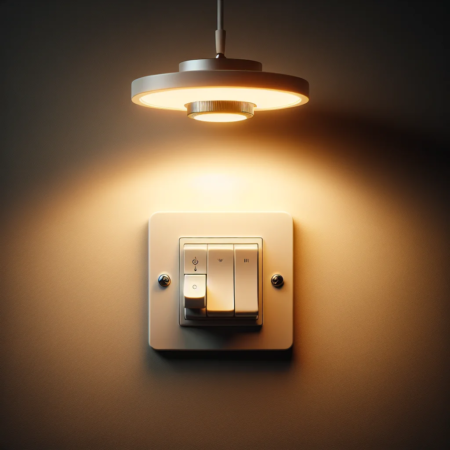Check out this Youtube video: “How To Add A Light To A Finished Ceiling – YouTube” for a step-by-step guide on adding more ceiling lights to your space and brightening up any room in your home.

Contents
Understanding the Basics of Lighting
-
Do you know the basics of lighting and the different types of ceiling lights?
-
Yes, there are different types of ceiling lights to consider, including ambient lighting, recessed lighting, ceiling fans, task lighting, accent lighting, pendant lights, and track lighting. Each type serves a specific purpose in enhancing the lighting of a room.
-
Can you explain the proper placement for additional ceiling lights?
-
Yes, determining the ideal placement for additional ceiling lights involves assessing the room, determining light intensity, spacing the lights effectively, installing task lighting above work areas, and strategically positioning accent lights to highlight focal points without creating glare.
-
Do you understand the electrical requirements for adding more ceiling lights?
-
Yes, it’s important to evaluate existing wiring, consult a professional electrician if necessary, select appropriate fixtures that comply with electrical standards, and adhere to safety precautions during the installation process to ensure a safe and efficient integration of additional ceiling lights.
Different types of ceiling lights
When it comes to enhancing the lighting in a room, the choice of ceiling lights plays a pivotal role. Here are the different types to consider:
- Ambient Lighting: Provides overall illumination to the room, creating a warm and inviting atmosphere.
- Recessed Lighting: Installed into hollow openings of the ceiling, offering a low-profile, modern look and accentuating specific areas.
- Ceiling Fans: Not only circulates air but also provides overhead lighting, serving a dual purpose.
- Task Lighting: Focuses on a specific area for performing tasks such as reading, cooking, or working.
- Accent Lighting: Highlights artwork, architectural features, or specific areas to create a focal point.
- Pendant Lights: Suspended from the ceiling, adding character and style to the space.
- Track Lighting: Consists of adjustable fixtures along a track, allowing flexibility in directing light to different areas.
The appropriate type of ceiling lights depends on the specific requirements of the room, its size, function, and aesthetic appeal.
Determining the right placement for additional lights
Determining the ideal placement for additional ceiling lights involves a strategic approach to achieve optimal illumination across the space. Here’s a step-by-step guide to proper placement:
- Assess the Room: Understand the functional areas and points of interest that require enhanced lighting.
- Determine Light Intensity: Consider the desired brightness and the purpose of the lighting to identify the required light intensity for each area.
- Spacing: For recessed lights, use the formula where the distance between lights is double at the ends. This, combined with the room’s dimensions, helps establish an effective layout.
- Task Areas: Install task lighting directly above work areas, such as kitchen counters or desks, to provide focused, shadow-free illumination.
- Accent Points: When illuminating artwork or architectural features, ensure the lights are strategically positioned to highlight these focal points without creating glare.
By following these guidelines, one can ensure that the additional ceiling lights are placed thoughtfully to optimize both function and aesthetics.
Understanding the electrical requirements for adding more ceiling lights
Before adding more ceiling lights, it’s crucial to understand the electrical requirements and ensure a safe and efficient installation process. Here’s what you need to consider:
- Evaluate Existing Wiring: Determine whether the current electrical system can support additional lights without overloading the circuit.
- Consult a Professional: If unsure, it’s advisable to seek guidance from a qualified electrician to assess the capacity of the electrical system and make necessary upgrades.
- Select Appropriate Fixtures: Choose fixtures that comply with the electrical standards and are compatible with the existing wiring to ensure seamless integration.
- Safety Precautions: Adhere to safety protocols during installation, including turning off the power supply, proper insulation, and following local regulations.
By understanding the electrical requirements, one can confidently proceed with adding more ceiling lights while prioritizing safety and compliance with electrical standards.
Planning Your DIY Ceiling Lighting Project
Assessing the current lighting setup is crucial before starting the DIY ceiling lighting project. Do you need to assess your current lighting setup? Yes, it’s important to note the existing fixtures, their locations, and whether the lighting adequately covers the space. Creating a lighting plan is essential for a balanced and functional lighting scheme. Do you need to create a lighting plan for your space? Yes, consider the room’s layout, function, and furniture placement to determine the appropriate types of lighting for each area. Lastly, gathering the necessary tools and materials is crucial for a successful DIY ceiling lighting project. Do you need to gather necessary tools and materials? Yes, it’s important to have the appropriate tools like a ladder, screwdriver, wire strippers, and materials such as ceiling light fixtures, wiring, and mounting hardware for a streamlined installation process.
Assessing the current lighting setup
Assessing your current lighting setup is the crucial first step in adding more ceiling lights. Take note of the existing fixtures and their locations.
Determine if the current lighting adequately illuminates the space or if additional lighting is necessary. Pay attention to any areas of the room that may be underlit or shadowed.
Assessing the current lighting setup allows you to identify the specific areas where you need to add more ceiling lights for a well-balanced and evenly lit room.
Creating a lighting plan for your space
Creating a lighting plan involves thorough considerations such as the room’s layout, its functions, and the atmosphere you want to achieve. Start by drafting a floor plan and marking immovable objects.
Consider the room’s functions and the placement of furniture to ensure the even distribution of light. Choose the appropriate types of lighting for each area, such as ambient lighting for the living area and flushed wooden ceiling lights for the dining area.
Careful planning will help you achieve a balanced and aesthetically pleasing lighting scheme.
Gathering necessary tools and materials
Before embarking on your DIY ceiling lighting project, gather the necessary tools and materials. You will typically need tools such as a ladder, screwdriver, wire strippers, and a voltage tester.
As for materials, ensure you have the appropriate ceiling light fixtures, wiring, and mounting hardware. Consider the type of ceiling light fixture you want to install, whether it’s a pendant light, chandelier, or recessed lighting.
Having the right tools and materials at hand will streamline the installation process and ensure a successful outcome.
How to Add More Ceiling Lights
To add more ceiling lights, start by planning the layout for the new fixtures and identifying a power source. Then, run new wiring for the additional light fixtures, ensuring it complies with safety regulations. Finally, test the connections and troubleshoot any issues to ensure a safe and fully functional lighting setup.
Running new wiring for additional light fixtures
To add more ceiling lights by running new wiring for additional light fixtures, start by planning the layout to determine the best placement for the new fixtures. Turn off the power supply and then identify a power source for the new lights.
Next, measure and cut the wires, ensuring the proper length to connect the new fixtures. Secure the wiring in place and ensure it complies with safety regulations.
Remember to test the connections before completing the installation to avoid any potential risks.
Installing junction boxes for new ceiling lights
When installing junction boxes for new ceiling lights, always choose the appropriate size and type of junction box for the fixtures. Position the junction box in the ceiling, ensuring it is aligned properly and securely fastened.
Connect the wires from the new fixtures to the junction box, following the color codes for accuracy. Double-check the connections and ensure they are tight and secure.
Lastly, cover the junction box with a matching cover plate to provide a neat finish.
Connecting new fixtures to the existing electrical system
Connecting new fixtures to the existing electrical system begins with turning off the power and selecting the appropriate circuit for the new fixtures. Identify the wiring setup and follow the manufacturer’s instructions for the specific fixtures.
Connect the wires securely, ensuring the color-coded wires match correctly. Once the connections are made, carefully tuck the wiring into the electrical box and secure the fixture.
Finally, restore the power and test the new fixtures to guarantee proper functionality.
Testing and troubleshooting the new lighting setup
After the installation, testing and troubleshooting the new lighting setup is crucial. Turn on the power and check each new fixture to confirm that they are lighting up as expected.
Look out for any flickering or dimming, which can indicate wiring issues. Additionally, use a voltage tester to confirm that the electrical supply is consistent and within the recommended range.
If any issues arise during testing, revisit the connections and troubleshoot accordingly to ensure a safe and fully functional lighting setup.
Ensuring Safety and Compliance
Yes, it is advisable to consult a licensed electrician when installing additional ceiling lights to ensure compliance with electrical codes and safety standards. Safety precautions such as turning off the power at the circuit breaker, using insulated tools, and wearing personal protective equipment should be observed during the installation process. It is important to research and adhere to local electrical codes and regulations to maintain safety and compliance.
Adhering to electrical codes and regulations
When adding more ceiling lights, it is critical to adhere to electrical codes and regulations to ensure safety and compliance. Each locality has its own set of codes and regulations that govern electrical installations, and it is imperative to familiarize oneself with these guidelines before commencing any work.
Ignoring these codes can pose serious safety hazards and may result in legal consequences. For instance, in the United States, the National Electrical Code (NEC) sets the standard for electrical installation and provides comprehensive guidelines to guarantee the safety of occupants.
Using proper safety measures during installation
Proper safety measures must be taken during the installation of additional ceiling lights to prevent accidents and ensure the well-being of individuals in the space. This includes turning off the power at the circuit breaker, using insulated tools, and wearing personal protective equipment such as gloves and safety goggles.
Additionally, it is essential to test all connections and wires thoroughly to mitigate the risk of electrical accidents. Furthermore, adequate precautions should be taken to prevent falls, especially when working on elevated surfaces like ceilings.
Hiring a professional electrician when necessary
In many cases, it is prudent to enlist the services of a professional electrician when adding more ceiling lights to guarantee the safety and efficiency of the installation. Electricians possess the requisite knowledge, experience, and expertise to execute electrical work in adherence to codes and regulations.
By engaging a professional electrician, individuals can also ensure that the installation is carried out proficiently, reducing the likelihood of errors and safety hazards. Moreover, electricians can offer valuable insights and recommendations regarding the most suitable lighting solutions for specific spaces, enhancing the overall lighting design.
Frequently asked questions about adding more ceiling lights
-
Can I install additional ceiling lights without consulting an electrician? Engaging a licensed electrician is recommended to ensure that the installation adheres to electrical codes and safety standards.
-
What are the primary safety precautions to observe during the installation process? It is imperative to turn off the power at the circuit breaker, utilize insulated tools, wear personal protective equipment, and test all connections meticulously.
-
How do I ascertain the relevant electrical codes and regulations in my locality? Local building authorities or electrical inspection departments can provide comprehensive information on the specific codes and regulations applicable to electrical installations within a given area. It is crucial to research and adhere to these stipulations diligently to maintain safety and compliance.
-
Are there any restrictions on the type or wattage of ceiling lights that can be installed? Certain areas may have restrictions on the type, wattage, or positioning of ceiling lights, and it is essential to consult local regulations to ensure compliance with these requirements.
-
What are the signs that indicate the need for professional assistance during the installation of ceiling lights? If the installation involves complex wiring, requires modifications to the electrical system, or poses safety concerns, seeking professional assistance is highly advisable to prevent potential risks and ensure a seamless installation process.
-
Is it permissible to modify existing electrical fixtures to accommodate additional ceiling lights? Any modifications to existing electrical fixtures should be approached cautiously and in compliance with electrical codes to safeguard against electrical hazards and ensure the structural integrity of the installation.
-
What measures should be taken to prevent electrical accidents associated with ceiling light installation? Thorough testing of electrical connections, cautious handling of wiring, and adherence to safety protocols can significantly reduce the likelihood of electrical accidents during the installation of ceiling lights.
-
What are the consequences of disregarding electrical codes and safety measures during ceiling light installation? Disregarding electrical codes and safety measures can lead to electrical hazards, compromised structural integrity, and potential legal liabilities. Complying with these regulations is essential to safeguard the well-being of individuals and property.
| FAQ | Answer |
|---|---|
| Can I install additional ceiling lights without consulting an electrician? | Engaging a licensed electrician is recommended to ensure that the installation adheres to electrical codes and safety standards. |
| What are the primary safety precautions to observe during the installation process? | It is imperative to turn off the power at the circuit breaker, utilize insulated tools, wear personal protective equipment, and test all connections meticulously. |
| How do I ascertain the relevant electrical codes and regulations in my locality? | Local building authorities or electrical inspection departments can provide comprehensive information on the specific codes and regulations applicable to electrical installations within a given area. It is crucial to research and adhere to these stipulations diligently to maintain safety and compliance. |
| Are there any restrictions on the type or wattage of ceiling lights that can be installed? | Certain areas may have restrictions on the type, wattage, or positioning of ceiling lights, and it is essential to consult local regulations to ensure compliance with these requirements. |
| What are the signs that indicate the need for professional assistance during the installation of ceiling lights? | If the installation involves complex wiring, requires modifications to the electrical system, or poses safety concerns, seeking professional assistance is highly advisable to prevent potential risks and ensure a seamless installation process. |
| Is it permissible to modify existing electrical fixtures to accommodate additional ceiling lights? | Any modifications to existing electrical fixtures should be approached cautiously and in compliance with electrical codes to safeguard against electrical hazards and ensure the structural integrity of the installation. |
| What measures should be taken to prevent electrical accidents associated with ceiling light installation? | Thorough testing of electrical connections, cautious handling of wiring, and adherence to safety protocols can significantly reduce the likelihood of electrical accidents during the installation of ceiling lights. |
| What are the consequences of disregarding electrical codes and safety measures during ceiling light installation? | Disregarding electrical codes and safety measures can lead to electrical hazards, compromised structural integrity, and potential legal liabilities. Complying with these regulations is essential to safeguard the well-being of individuals and property. |





